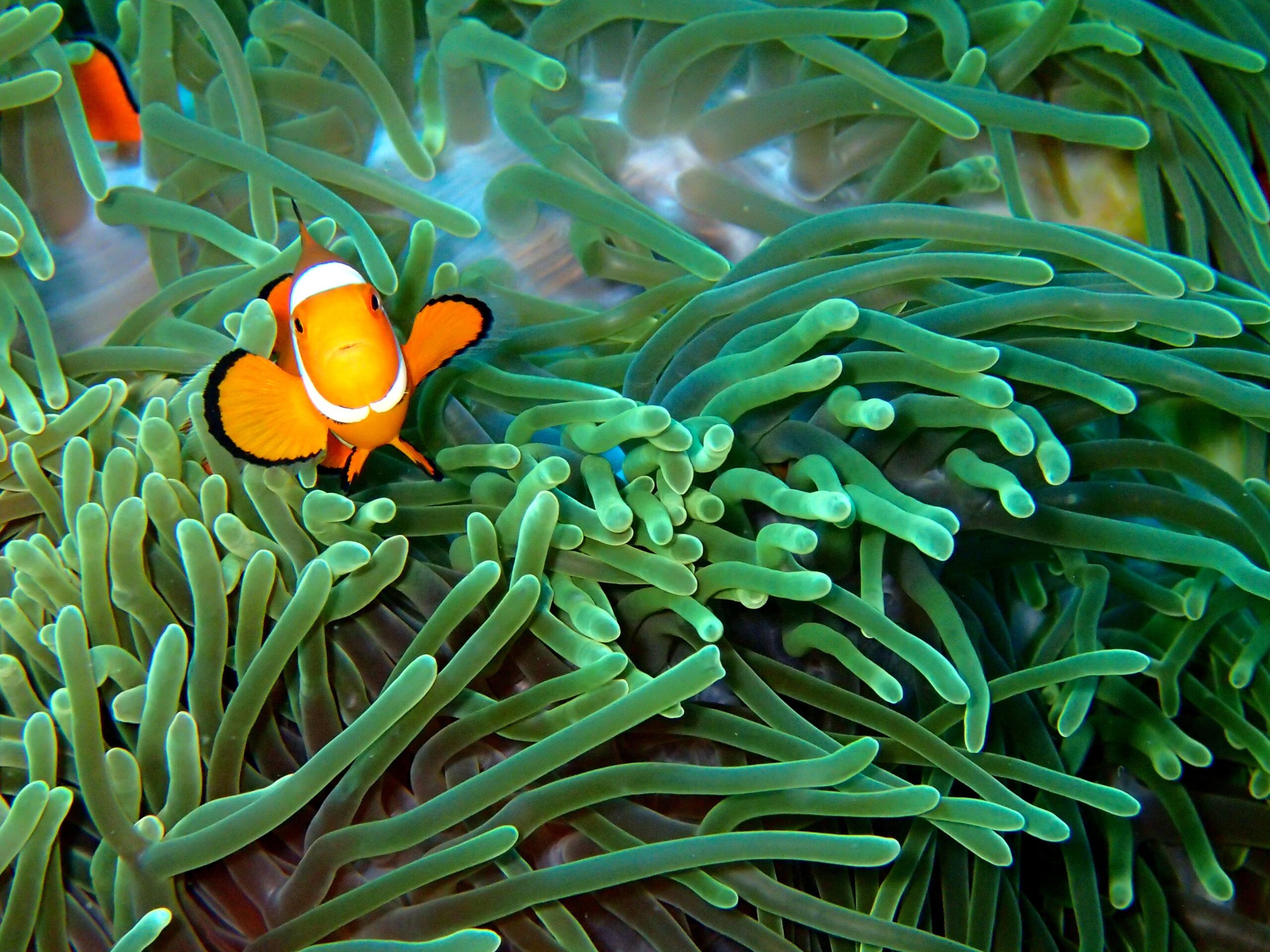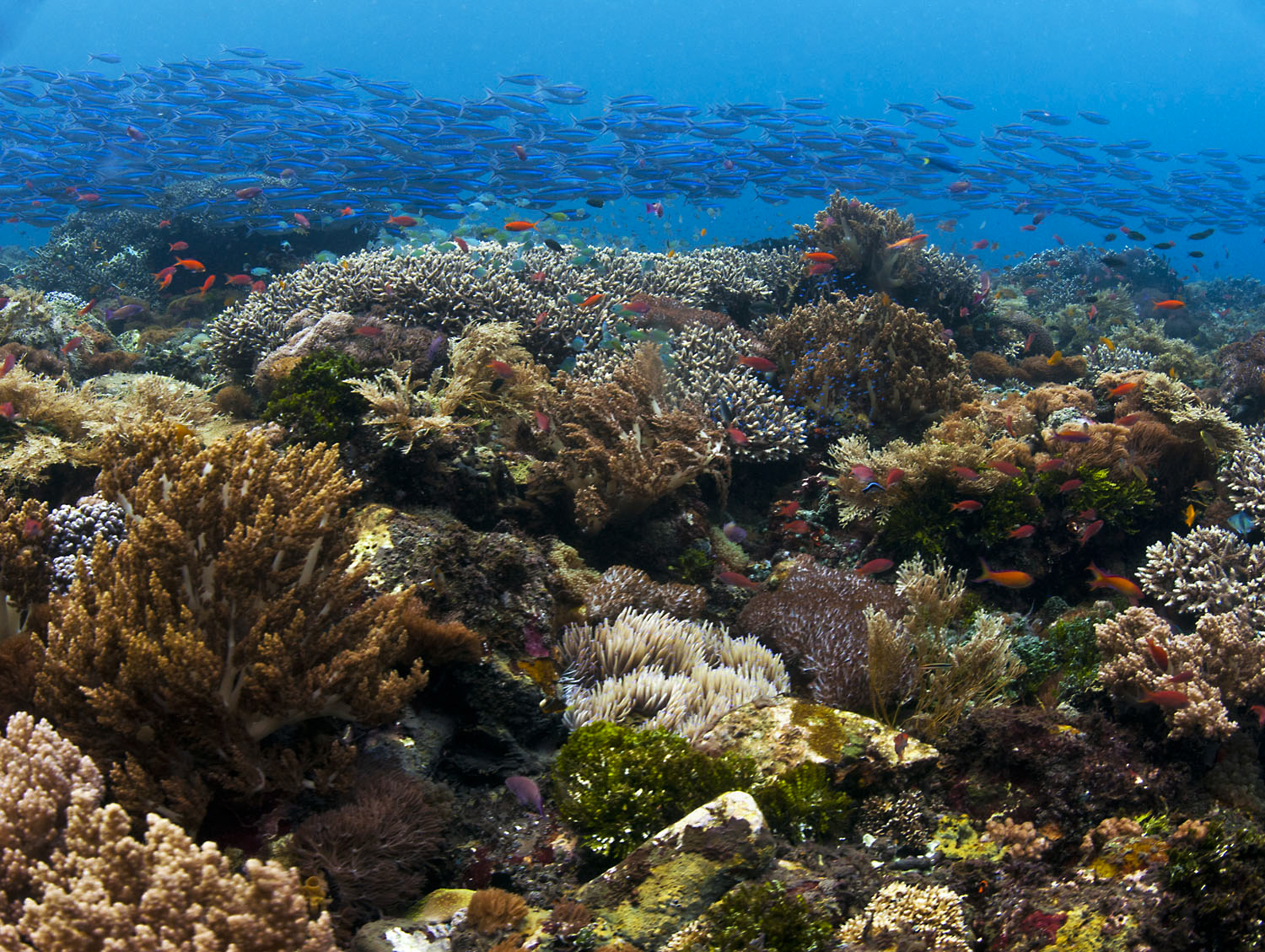Keeping Up with Nemo
Today on Finding Nemo’s 15th anniversary, learn more about how ocean acidification is threatening clownfish

This blog post was written by Anna Smith, an Ocean Conservancy intern working with the Ocean Acidification program for the month of May 2018. Anna is a senior in high school and is looking forward to studying Environmental Sciences in college.
Believe it or not, fifteen years ago today, everyone’s favorite clownfish had his big debut—our lovely friend Nemo! While the spotlight was on Nemo once again a couple years ago with his role in Disney-Pixar’s Finding Dory, we’re checking in with Nemo today to see how he’s doing, fifteen years after his first Hollywood appearance.
Sadly, Nemo and his friends are facing a reality not quite as uplifting as it may appear on-screen. Many of the difficulties that clownfish and anemonefish are experiencing have to do with the environmental threats affecting their homes, their host anemones. In recent years, large-scale coral bleaching events have resulted in detrimental impacts on coral reef communities and anemones around the world. Stressors including rising sea temperatures, ocean acidification and pollution have driven this coral bleaching, a process that involves anemones expelling the zooxanthellae that provide them with food and their beautiful coloration. And since clownfish depend on anemones for housing and protection, that’s a big problem for both corals and clownfish alike.
Research has shown that fish associated with bleached anemones suffer chronic stress, and high levels of cortisol—a stress hormone—have been detected in their blood. At the same time, this stress response has been linked to a drop in reproductive hormones in male and female clownfish; one study showed a 73% decrease in fertility among clownfish reacting to bleached anemones. In addition, clownfish reproduce in only a small temperature range and warming waters can have fatal effects on their eggs. Not only does coral bleaching stress our little friends out and deter reproduction, but the mere loss of habitat that follows makes it difficult for them to survive.

Weirdly enough, coral bleaching and ocean acidification both severely affect the clownfish senses. Sounds are key cues that help clownfish navigate, detect mates and find food. Although it’s tough for us to sing underwater, sound actually travels very well underwater! Healthy coral reefs are cosmopolitan centers of aquatic life and are bustling, noisy places full of fish buzzing and chirping. These noises help clownfish navigate when trying to find a suitable habitat or seek shelter and assist in distinguishing between places settled by friends and those filled with predators. With coral reefs in rapid decline, these cues are becoming less ubiquitous and intense.
And that’s not all. Scientific studies have proven that increased levels of CO2 in the ocean actually make it difficult for clownfish to hear at all! In experiments on juvenile clownfish raised in water with CO2 levels of today, CO2 levels predicted and simulated for 2050, or for and 2100, researchers found that the clownfish raised in today’s conditions knew well to avoid the sounds of predator-rich reefs. Those raised in higher levels of CO2, however, didn’t seem bothered by the noise at all—they just kept swimming as if they couldn’t hear it! Without proper hearing, clownfish become much more susceptible to predation. Once they spend too much time away from their host anemones, they must rebuild their immunity to their anemone’s stinging nematocysts, which is quite an arduous task and again leaves them vulnerable to predators.
Acidification also challenges clownfish sense of smell. When larvae reach a certain age, they begin looking for an appropriate shallow and tropical coral reef habitat, ideally close to a vegetated island and away from their spawning point. In order to identify such a dwelling place, clownfish move towards the smell of tropical tree leaves and away from the odor of tea tree plants from swamps at the water’s edge, and their parents (an evolutionary adaptation to avoid inbreeding). In experiments resembling those conducted to test hearing, the majority of clownfish larvae raised in more acidic conditions were no longer repelled by the smell of predators, tea tree leaves or their parents. This means it will become more difficult for clownfish to find reefs offering the conditions that will ensure their survival and the health of their offspring.
Given all of these concerns, we are left wondering if Nemo, and the rest of his species, will truly be able to acclimate and survive these challenging times. Since many of these changes are happening so quickly and our oceans are acidifying at such a rapid rate, there might not be enough time for clownfish to properly adapt by evolving. If clownfish moved towards the poles to seek cooler waters, that would take them into increasingly acidified waters, and away from the tropical coral zone they need for habitat. Unfortunately, tropical corals are also struggling to keep up with temperature changes. Nevertheless, Mother Nature never fails to amaze us with her power and ability to work wonders. Although it may seem unlikely, only time will tell if Nemo will be able to adapt to his ever-changing home.
We’re sad that clownfish aren’t doing better on Finding Nemo’s 15th anniversary. We don’t want this movie to serve as a reminder of an extinct fish species to future generations. It is incredible, however, how much we have learned about clownfish due to prior research investments and how science allows us to so closely keep up with Nemo. This also gives us reason to be optimistic. With further scientific funding and research, we can continue to investigate clownfish and find ways to support Nemo on his journey.